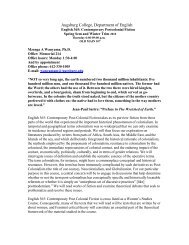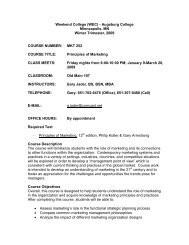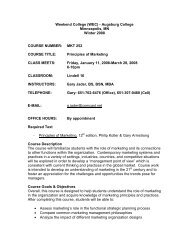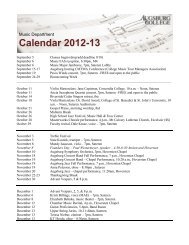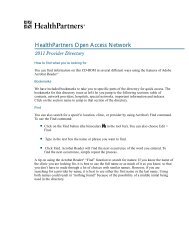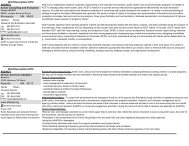Create successful ePaper yourself
Turn your PDF publications into a flip-book with our unique Google optimized e-Paper software.
•<br />
•<br />
•<br />
•<br />
Geometry: A Shapely Approach to Math<br />
What part of the protractor would you expect to use to measure an obtuse angle? And an acute one?<br />
(The left side? The right side? These answers will differ depending on which direction the angle is<br />
facing.)<br />
What does it mean for one angle to be ‘bigger’ than another? (Its measurement, in degrees, is larger.)<br />
Does an angle measurement tell us anything about the length of the lines which form the angle?<br />
(No!)<br />
Draw two angles with the same measurement (as best you can!) but make one with lines only an inch<br />
long, and the other with the lines extended to seven or eight inches. Are these two angles different?<br />
Now you’re ready to explore how much the degrees in a triangle add up to. Before doing any measuring,<br />
ask students to comment on how much the three angles of a triangle add up to. (More than 90! Isn’t it 360?<br />
Wait, if they were all obtuse angles than it would be have to be bigger than 3 x 90 because there are three<br />
angles in a triangle. That’s crazy, how can you make a triangle out of three obtuse angles? Can you make<br />
one with three acute angles?) Keep in mind that we want students to learn through discovery, so be sure<br />
never to say the answer is 180 degrees. Maybe suggest that you bet there’s one magic number all triangles<br />
have in common. Draw five or six triangles on the white board and ask the group: Don’t you think if you<br />
add up the angles in each triangle they will all be about the same?<br />
Draw a triangle on the white board and tell students the goal is to find that magic number. Ask for suggestions<br />
on how to find it. Continue with questions or suggestions until students articulate that we could do<br />
a bunch of examples and collect data. They should each make a table on their own paper to record the angle<br />
sum measurements of a number of triangles. Draw a bunch of different triangles, one at a time, on the white<br />
board. Let each student have a turn at using the protractor to measure the angles inside the triangle, write<br />
them down and add them up. Along the way, look for opportunities to guide students toward articulating<br />
facts they observe about triangles and angles and, if and when they make these statements, validate them and<br />
write them down. For example, one of my students exclaimed, “It’s impossible for a triangle to have three<br />
obtuse angles!” while his classmate noticed early on that “an angle that’s 180 degrees looks like a straight<br />
line.”<br />
When there are about ten minutes left stop the data collection. Now your group’s job is to find the magic<br />
number, if there is one. Is the data similar? What do you notice about it? (All the numbers are bigger<br />
than 100! This one doesn’t really fit because it’s 155 and all the others are between 170 and 190!) Discuss<br />
and debate what the magic number might be. If students are frustrated by the fact that their data includes<br />
a bunch of slightly different numbers and only a couple that are the same, you may want to talk about the<br />
human error involved in measuring angles. Convince your students that it would be impossible to measure<br />
each angle with complete accuracy. You can do so by referencing a time during the lesson that two students<br />
looked at the same angle with the same protractor and disagreed about what number to use as the measurement.<br />
When time is up, if students haven’t come to consensus about the magic number, tell them that they<br />
should ask everyone they know between now and the next lesson. They can also do their own research online<br />
or in an older sibling’s math book to confirm or deny their hypothesis. The magic n umber is 180; every<br />
triangle has three angles which add up to 180 degrees. If the students discover this during the lesson and are<br />
confident of it by the end, tell them you bet they’re right and the best way to check is to ask everyone they<br />
know and see if anyone else thinks it’s 180.<br />
23



